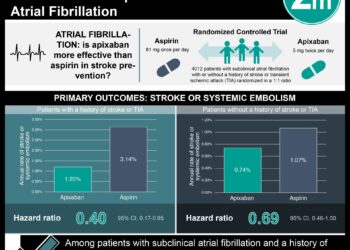Wellness Check: Sleep
Sleep problems may be associated with adolescents receiving welfare services
1. In this large population-based cross-sectional study, adolescents in foster care and receiving welfare services were found to have increased sleep problems, including higher incidence of insomnia and shorter sleep duration.
2. Additionally, exposure to adverse life events amongst adolescents receiving welfare services accounted for a substantial proportion of increased sleep problems.
Evidence Rating Level: 2 (Good)
Sleep problems are common in adolescence, and recent findings show an increased proportion of adolescents fitting the criteria for insomnia and reporting poorer sleep parameters. Past literature has highlighted the association between adolescence and sleep problems; however, there is a dearth of information exploring this relationship amongst at-risk adolescent groups. This study specifically aimed to identify any relationship between sleep problems and at-risk children who access welfare services.
This study used data from the youth@hordaland study conducted in 2012, which included adolescents born between 1993 to 1995 in West Norway, for the purposes of assessing service use, mental health, and lifestyle factors. Participants were removed for nonresponse to welfare service access questions as well as invalid sleep variable information. Study group was cohorted to control group (n=9166), foster care (n=132), and in-home welfare service (n=123). The primary outcome aimed to identify differences in sleep duration and insomnia prevalence amongst these cohorts.
Overall, this study identified 255 individuals that were either in foster care or receiving in-home welfare services. Sleep duration was significantly lower in both foster care and in-home service groups versus the general population of adolescents. Incidence of insomnia was significantly increased in the group that required in-home welfare services but not those in foster care. This pattern was replicated in sleep onset latency and oversleeping sleep variables. This study also identified that controlling for adverse life events led to an attenuation of sleep problems in those who lived under foster care. However, this study was limited by its self-reporting nature and the inability to differentiate between adverse life events, hindering the ability to explore difference in sleep problem prevalence. Nonetheless, this study suggests that in-home welfare services and foster care may place children at an increased risk of sleep problems.
Sleep disorders and insomnia may be strongly associated with atrial fibrillation
1. In this large population-based retrospective cohort study, patients with sleep disorders versus a cohort-matched control group were found to have an increased likelihood of also developing atrial fibrillation.
2. In sub-group analysis, insomnia was found to be associated with a greater incidence of atrial fibrillation among other sleep disorders (sleep apnea, sleep disturbance, and other sleep disorders)
Evidence Rating Level: 2 (Good)
Atrial fibrillation (AF), the most common cardiac arrhythmia, is associated with poor quality life and an increased risk of death. Past literature has highlighted an association between sleep apnea and cardiovascular disease and stroke, among other diseases. Unfortunately, past studies in the association of AF and sleep disorders have been conflicting. This study provided aimed to strengthen the inference of an association between AF and sleep disorders.
The study used a national health insurance database of Taiwanese residents. Residents aged 18 or older with a diagnosis of sleep apnea, insomnia, sleep disturbance or other sleep disorder between January 2001 and December 2012 were included. Individuals with a previous diagnosis of AF were excluded. The cohort was then matched by age and gender for a control group, and analyses was controlled for possible confounding diseases and medications. The primary outcome of the study was to determine the incidence rate of AF in sleep disorder cohorts.
The study identified 193 288 individuals with a sleep disorder diagnosis. The overall incidence rate of AF in the sleep disorder group was 1.35 times greater than control. Subgroup analyses revealed significantly higher incidence of AF in insomnia patients as opposed to sleep apnea, sleep disturbances, and other sleep disorders. These findings were consistent across all age categories. Medications with potential protective factors (including metformin, statins, and aspirin) and showed little effect. Interestingly, study findings from this large database study support an association with sleep disturbances and AF. However, this study was limited by its lack of adjusting for risk factors of AF, including: 1) obesity; 2) heart disease; 3) alcohol consumption. There was also a lack of objective data on sleep disturbances using polysomnography. Nonetheless, this study’s large sample size provides strong evidence of the association between sleep disturbances and AF.
Inappropriate sleep duration may influence the economic burden of health care
1. In this prevalence-based estimation study of health care costs, the estimated direct cost of insufficient sleep in Canada in 2020 was $484 million dollars, constituting 0.5% of the overall burned on illness in Canada.
2. Primary expenditures due to insufficient sleep were health care costs related to: in-hospital care, prescriptions medications, physician services, and mortality.
Evidence Rating Level: 2 (Good)
A reduction in sleep duration (i.e., less than 7 hours of sleep/night) is a health care concern in Canada. Previous literature has highlighted key adverse outcomes associated with insufficient sleep (ex. cardiovascular disease, hypertension, obesity, and type 2 diabetes) leading to a strain to the Canadian healthcare system. To date, there is no literature on the economic burden of insufficient sleep in the general population. This study aimed to estimate the extent of healthcare related costs associated with insufficient sleep.
The study used a prevalence-based approach, commonly used to estimate economic costs in disease processes. Estimates were developed using: 1) relative risk (RR) of health outcomes associated with decrease sleep duration (data obtained from meta-analyses); 2) direct and indirect costs in relation to each health outcome (data obtained from the Economic Burden of Illness in Canada); 3) prevalence of insufficient sleep duration in the Canadian population (data obtained from the 2020 Canadian Community Health Survey Rapid Response Module on Healthy Living).
Results demonstrated an increased risk of poor health outcomes in patients with insufficient sleep, ranging from a RR increase of 11% for coronary artery disease to 50% for depression. The estimated costs of insufficient sleep duration were as follows: $484 million (direct), $18 million (indirect), $502 million (total). The main contributors to these healthcare costs included prescription drugs, physician care, hospital care, and mortality. Interestingly, a 5% decrease in prevalence of insufficient sleep duration was estimated to lead to annual cost savings of $148 million. However, this study was limited due to its reliance on a prevalence-based approach (which uses several assumptions and may not reflect true costs) and including only seven health outcomes in its analysis. Nonetheless, this study was significant in being the first to assess the economic burden of insufficient sleep in a national context.
Image: PD
©2022 2 Minute Medicine, Inc. All rights reserved. No works may be reproduced without expressed written consent from 2 Minute Medicine, Inc. Inquire about licensing here. No article should be construed as medical advice and is not intended as such by the authors or by 2 Minute Medicine, Inc.







